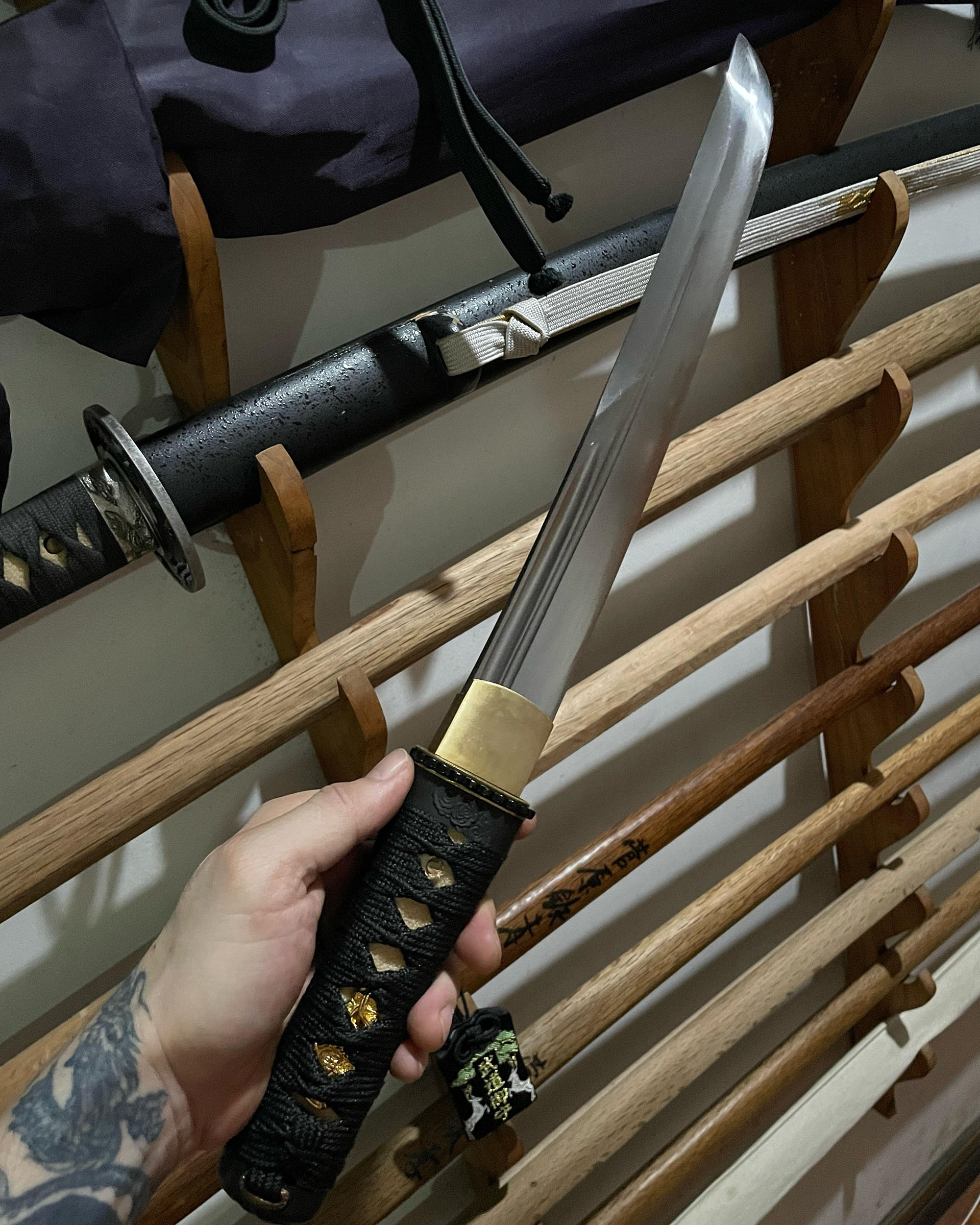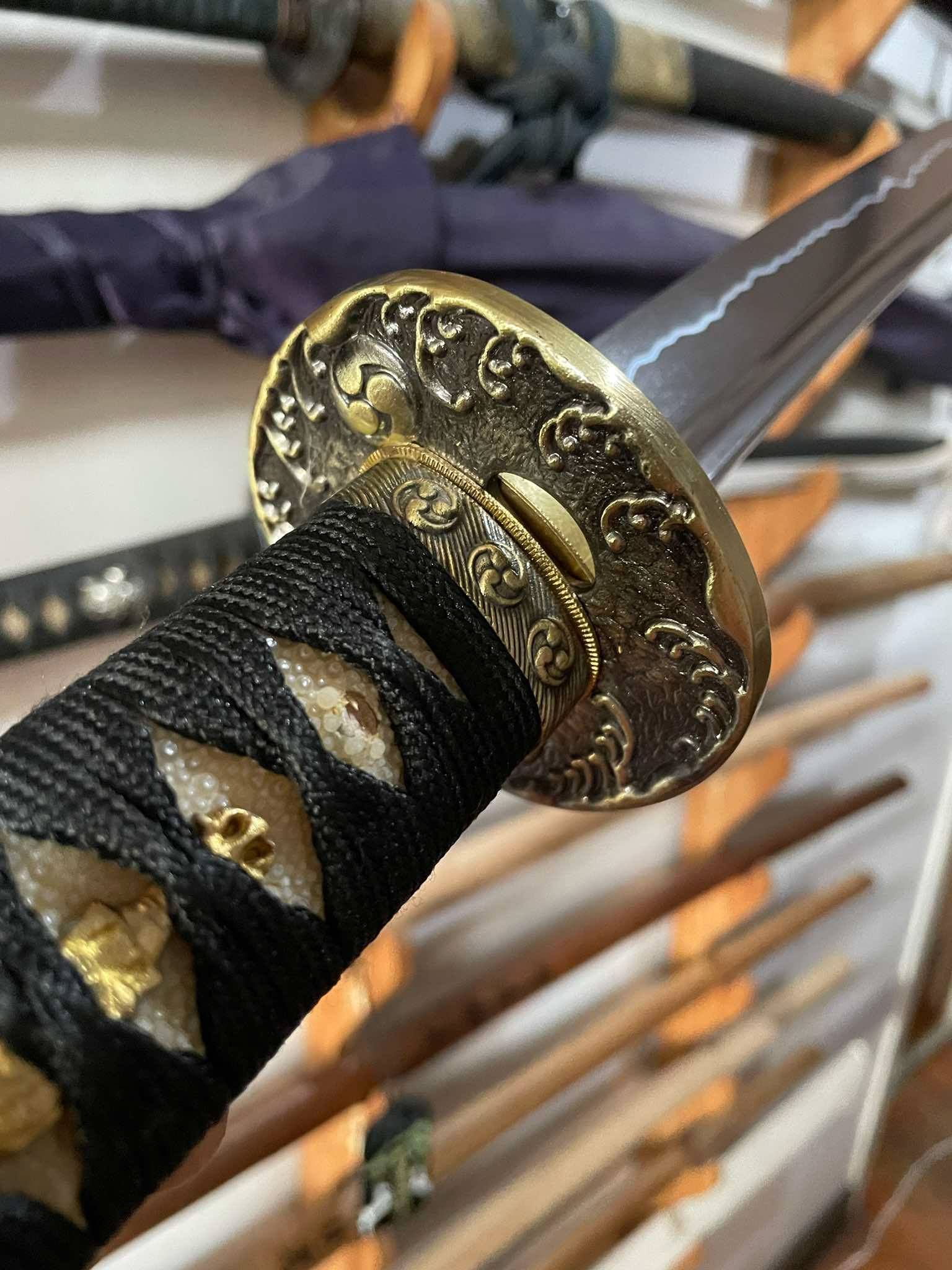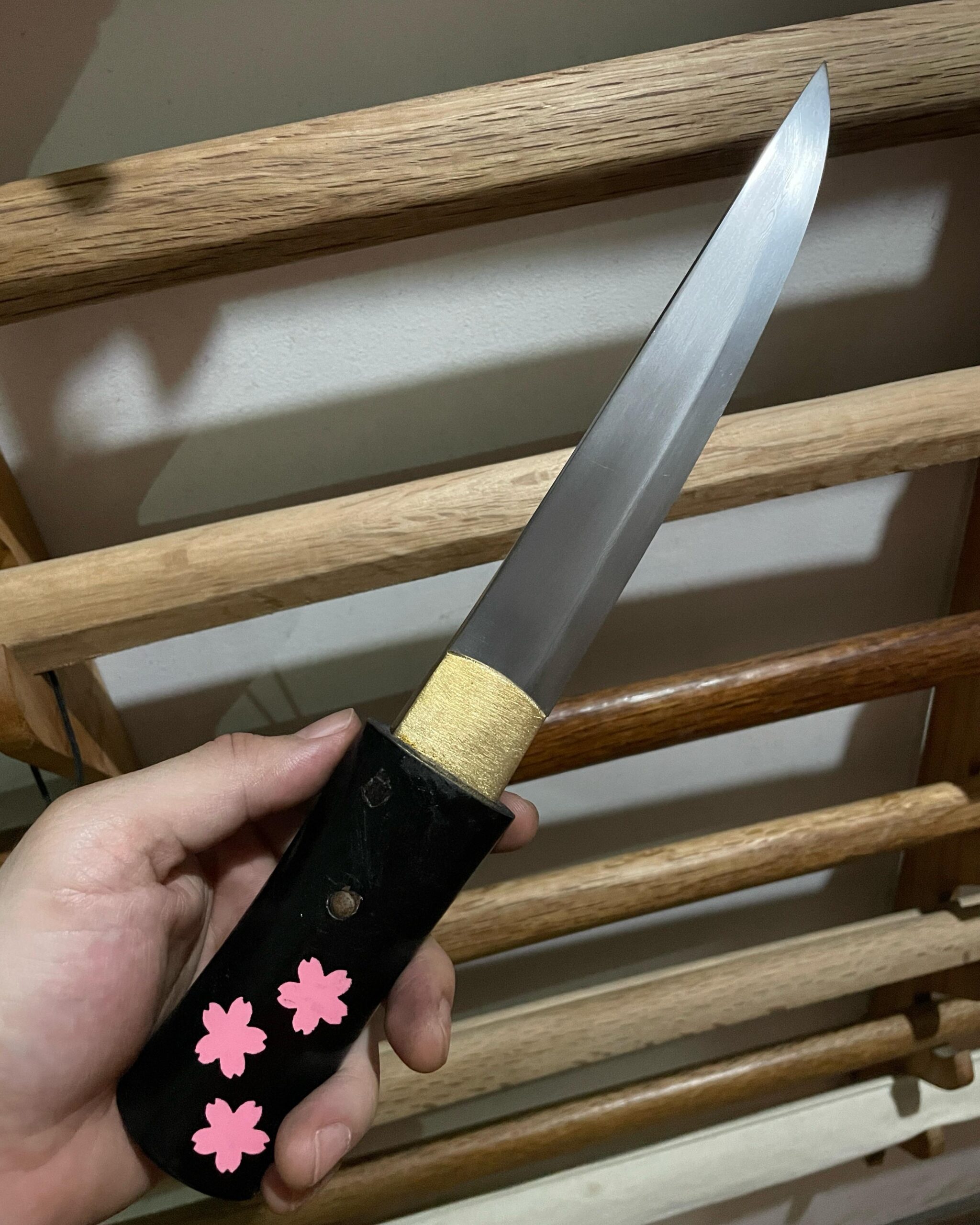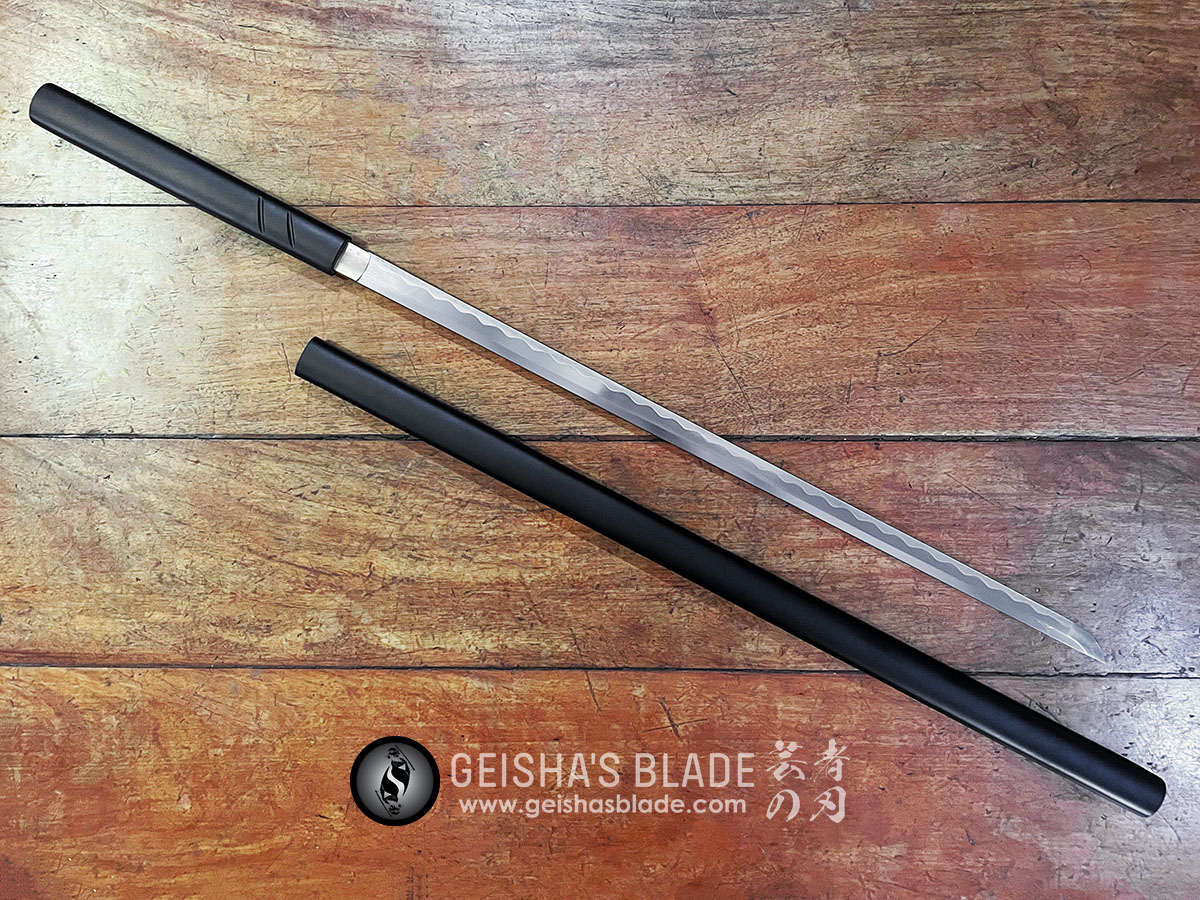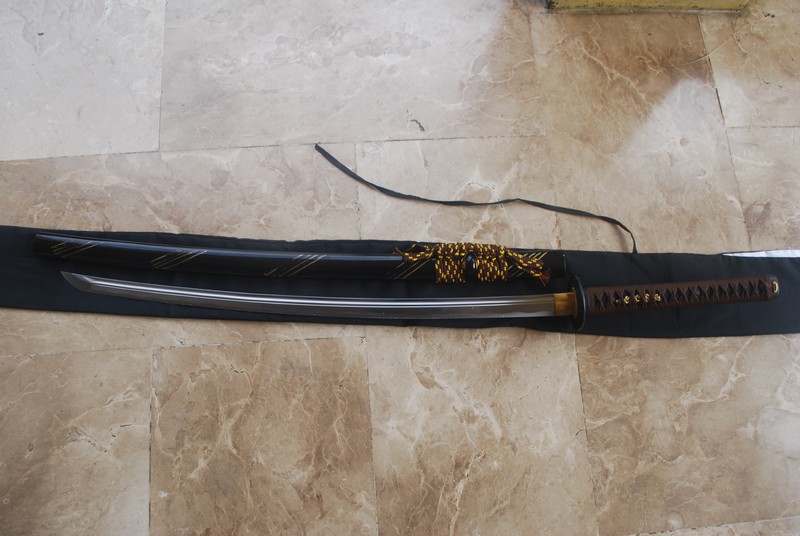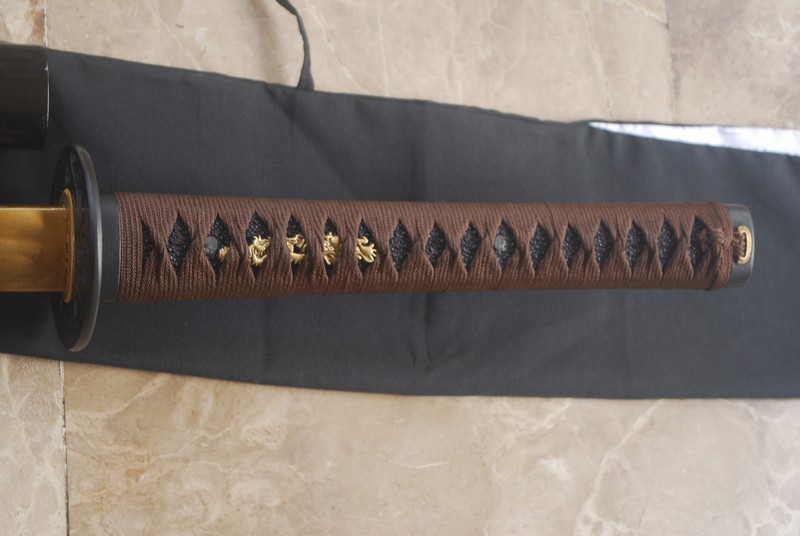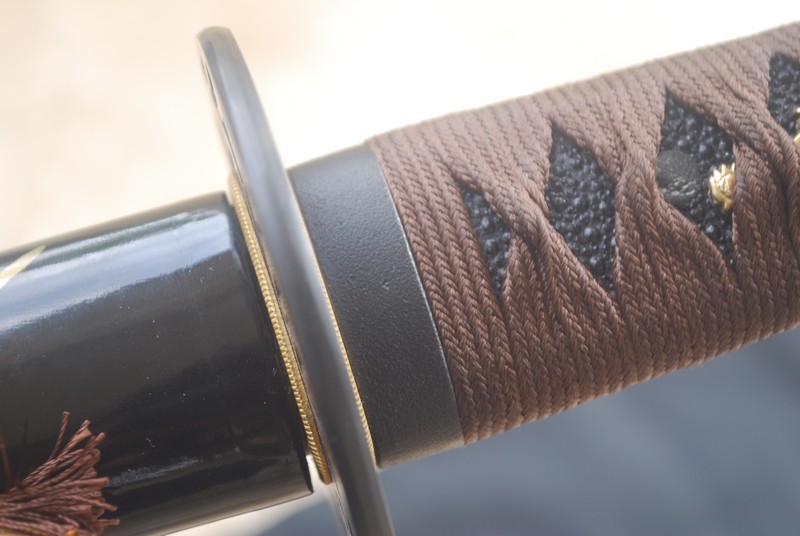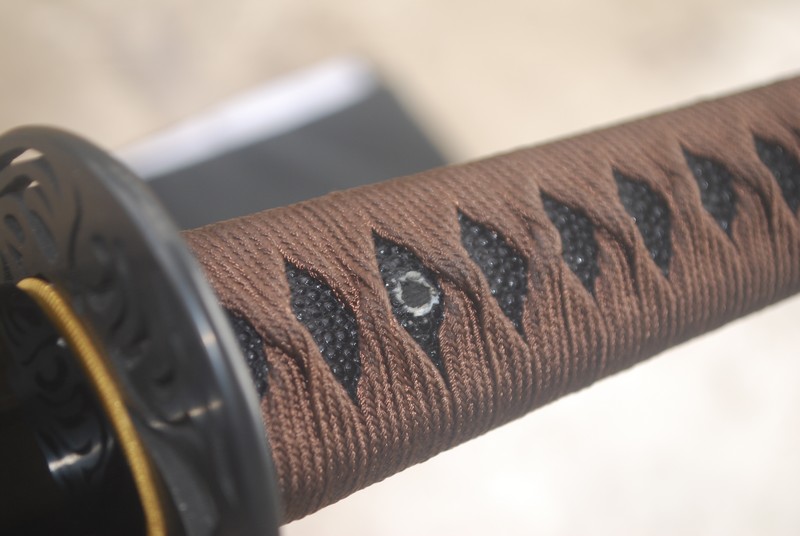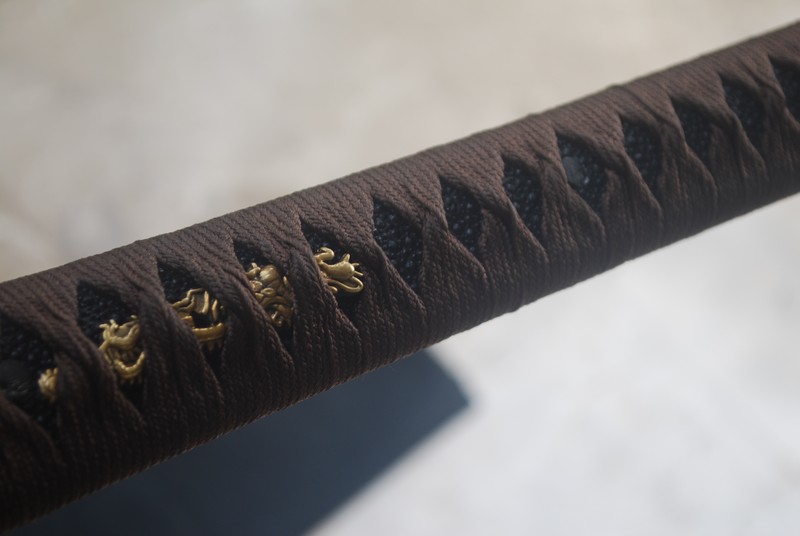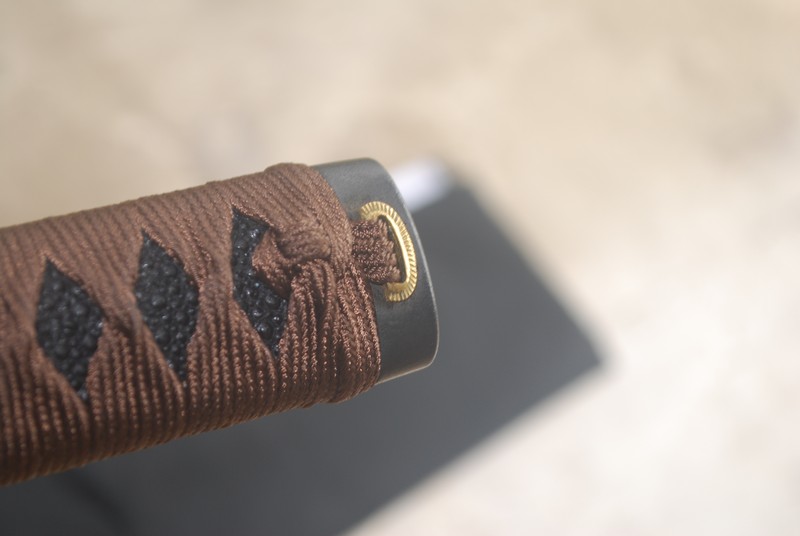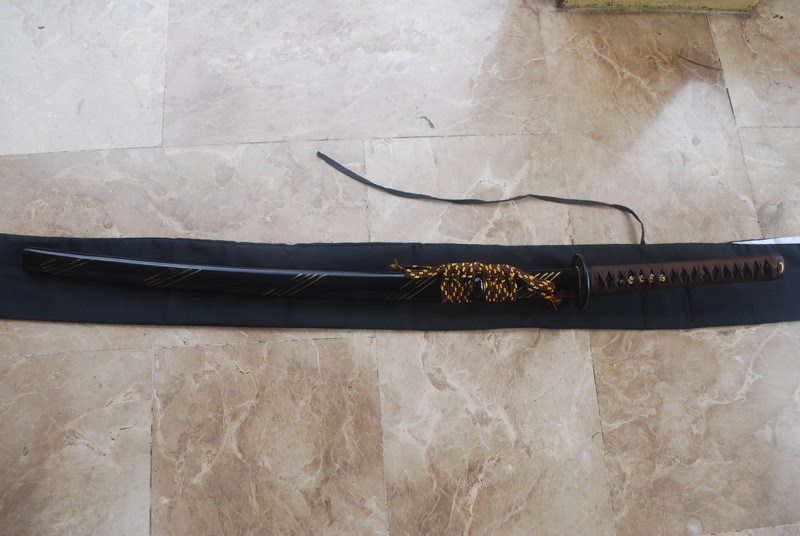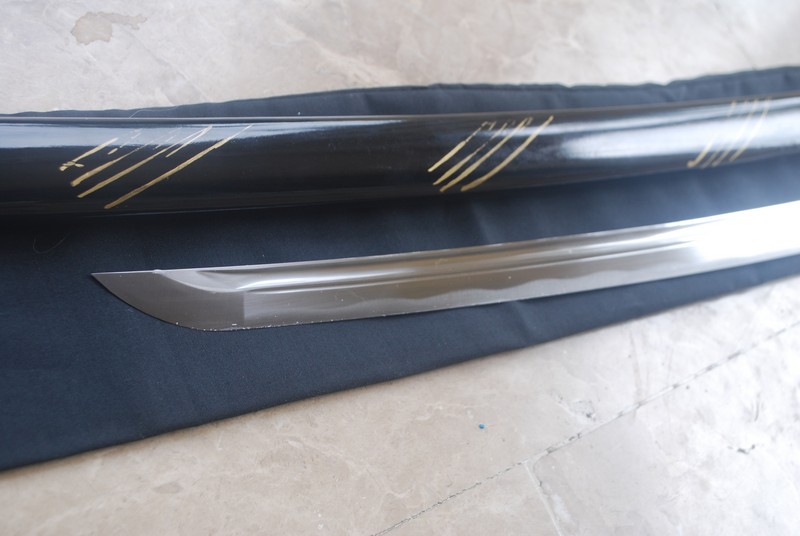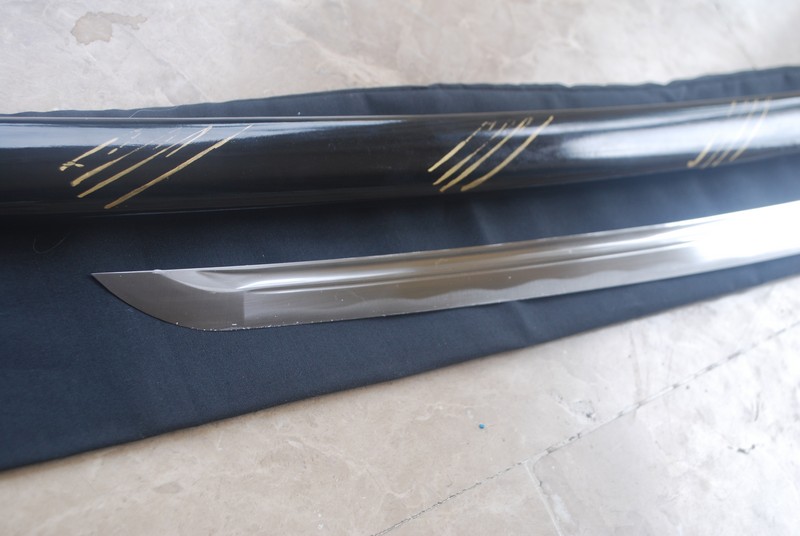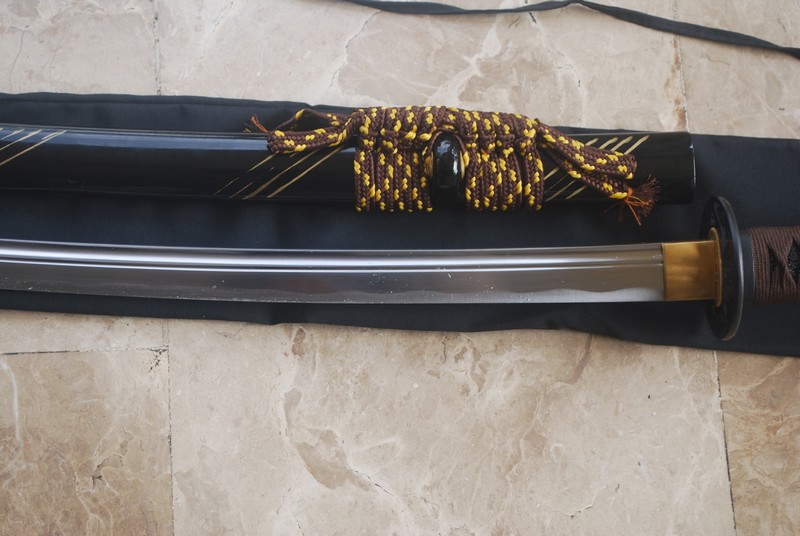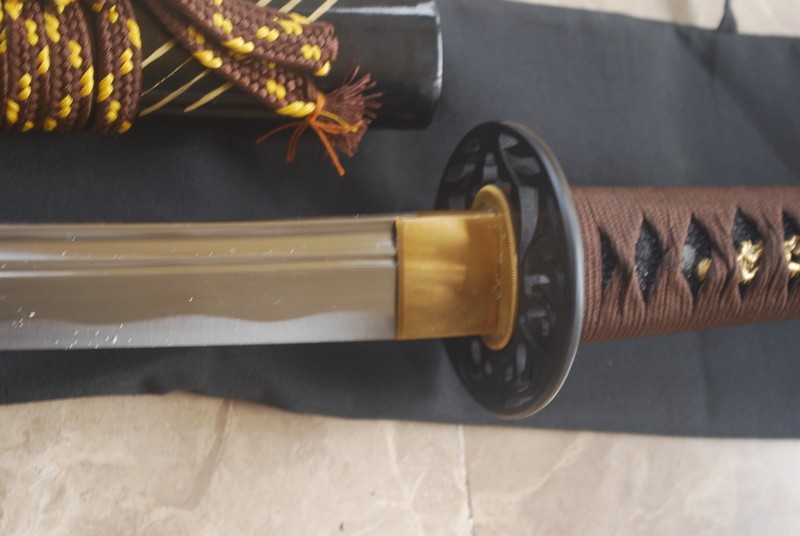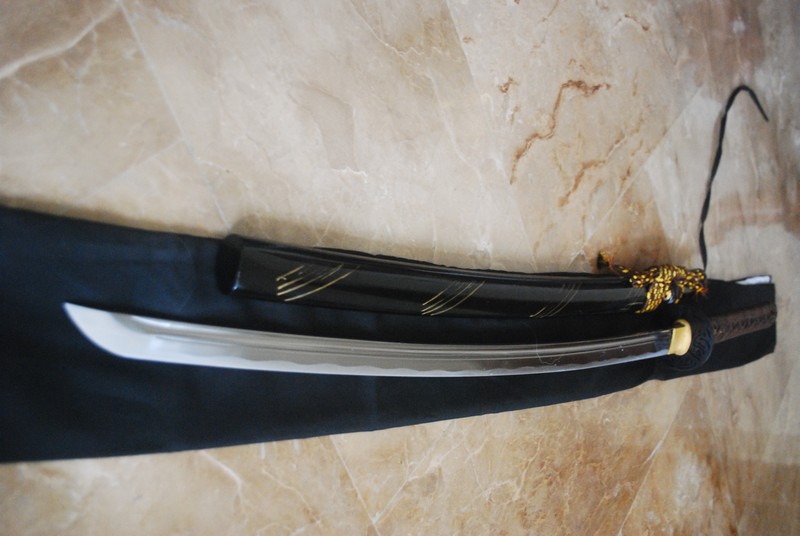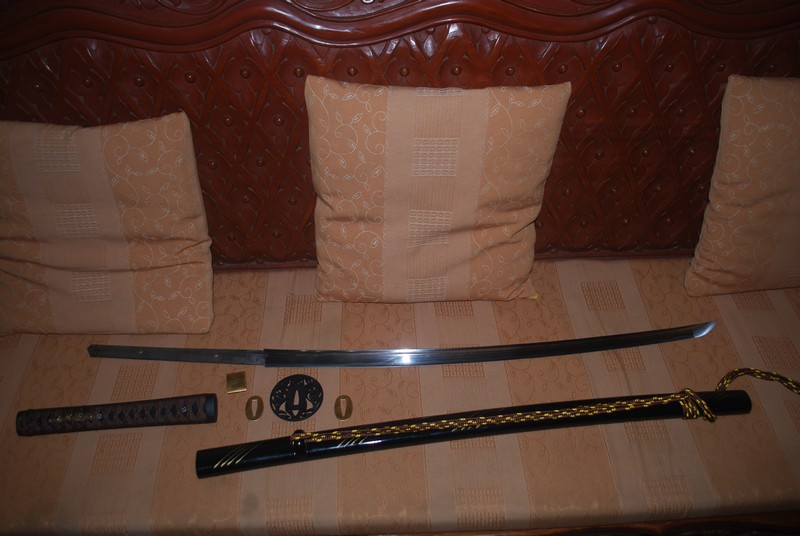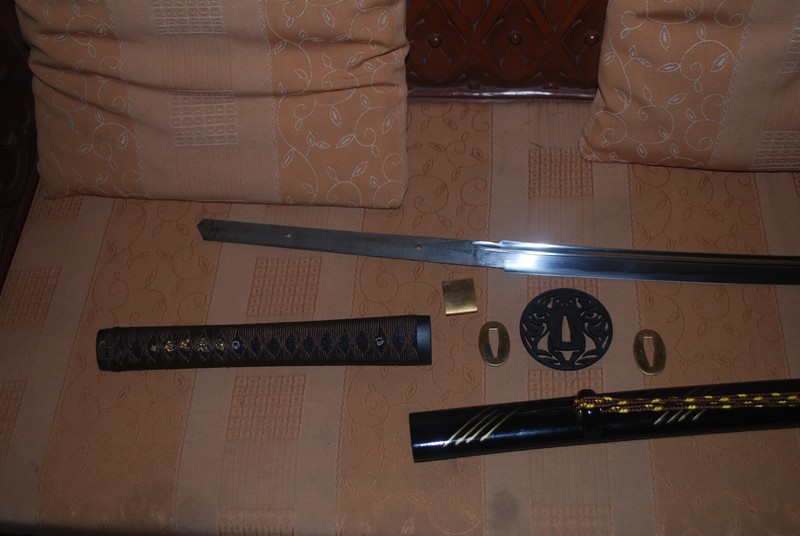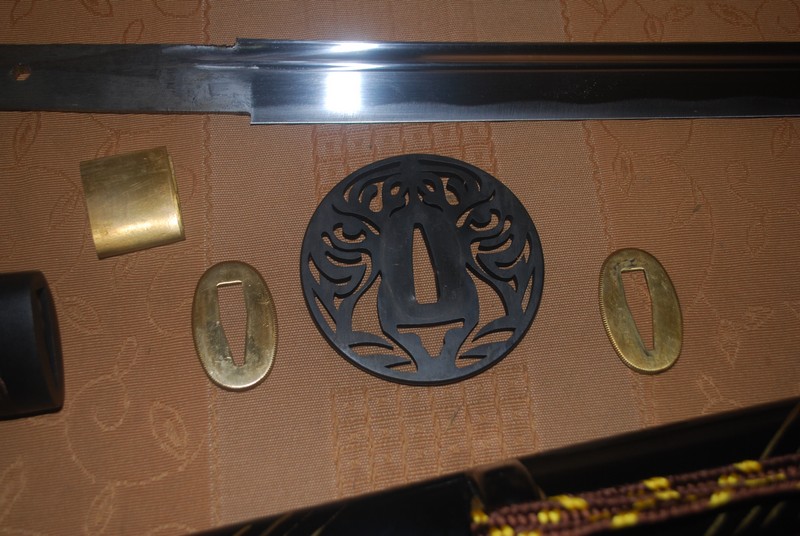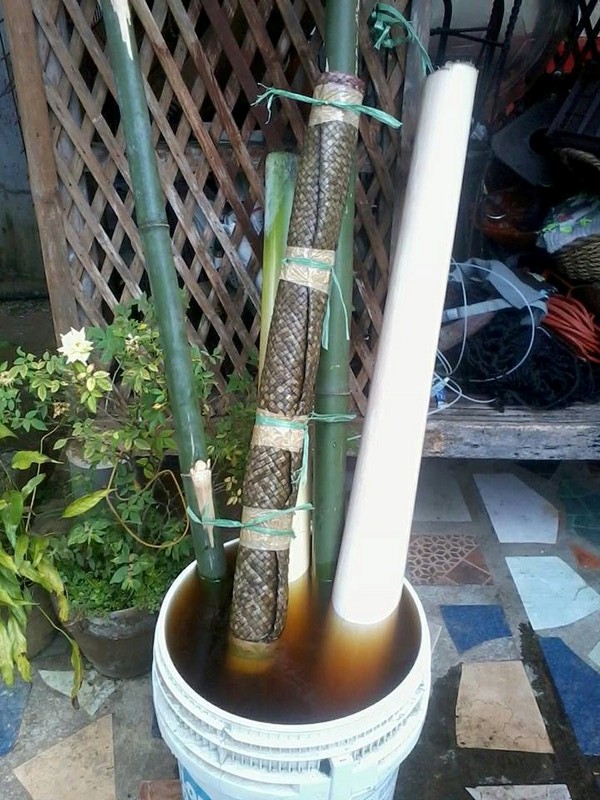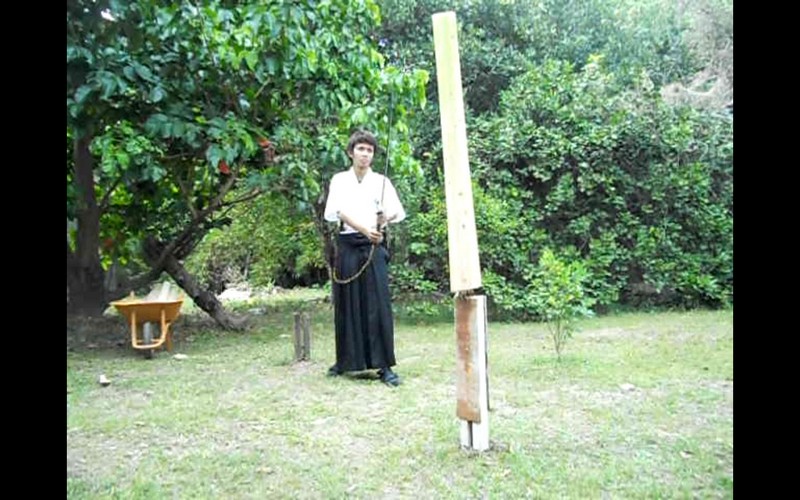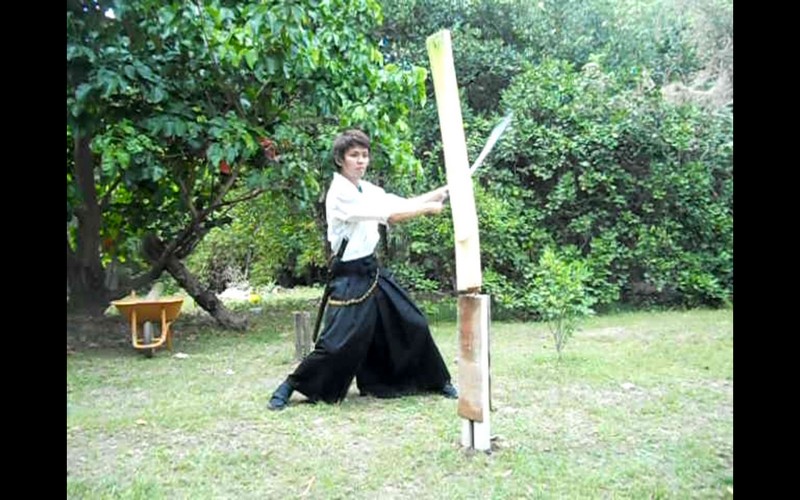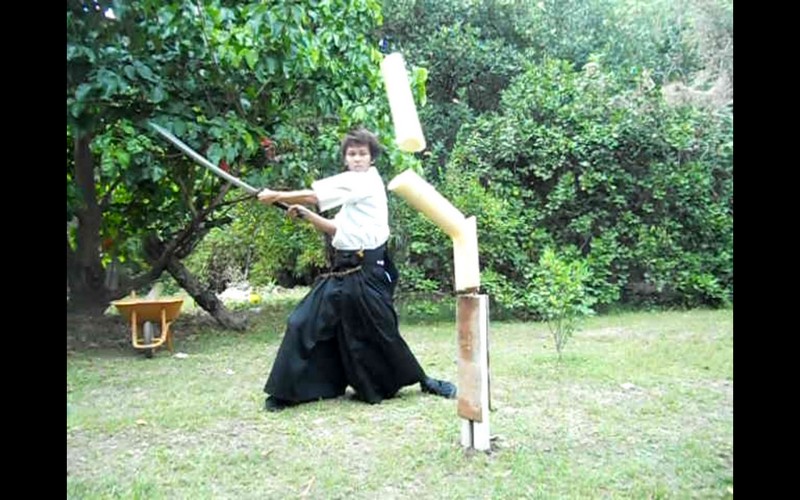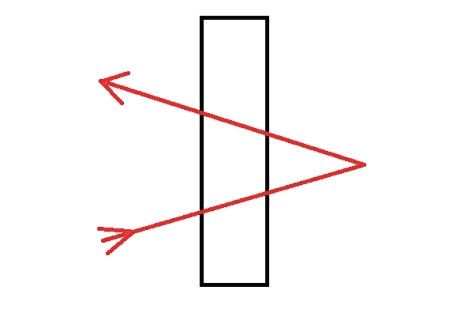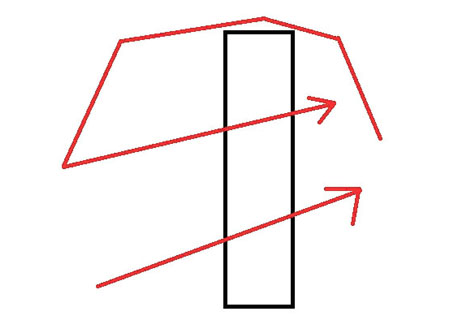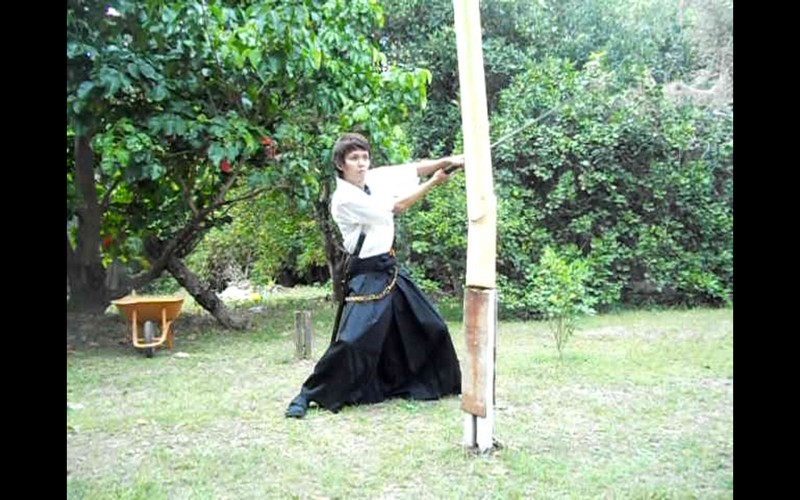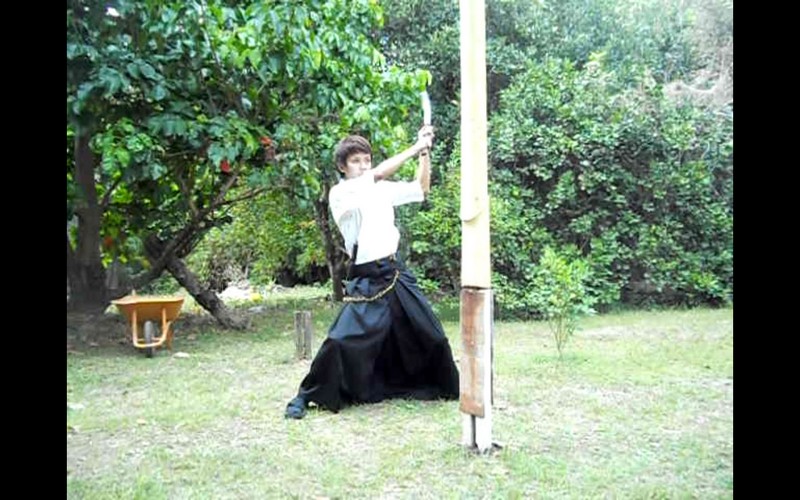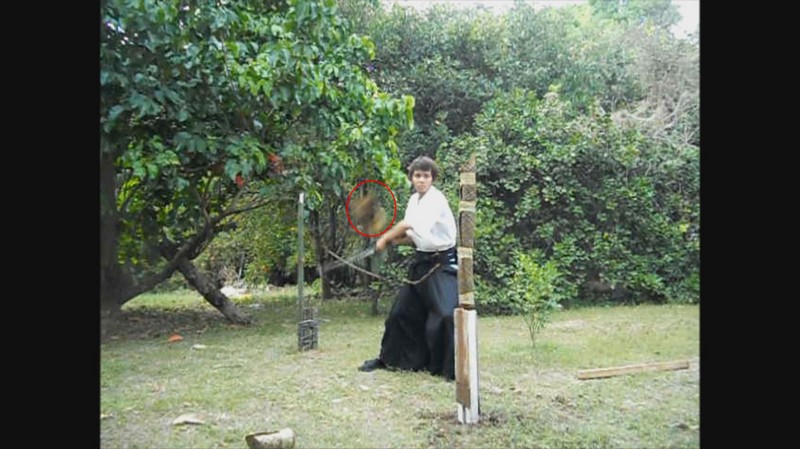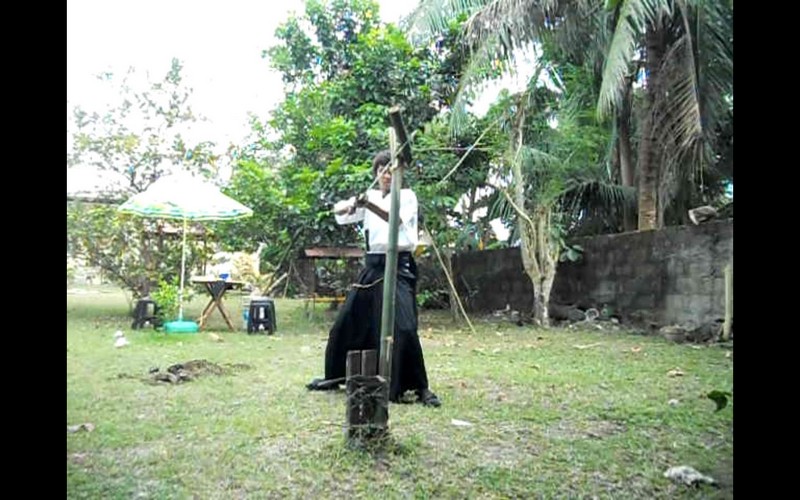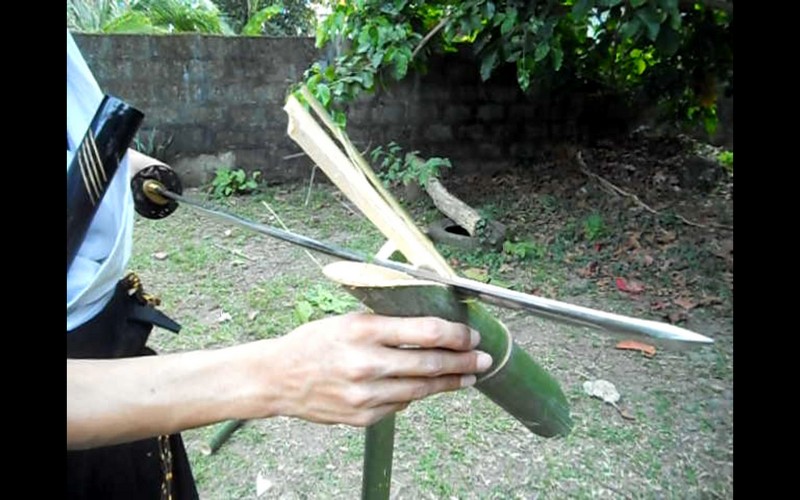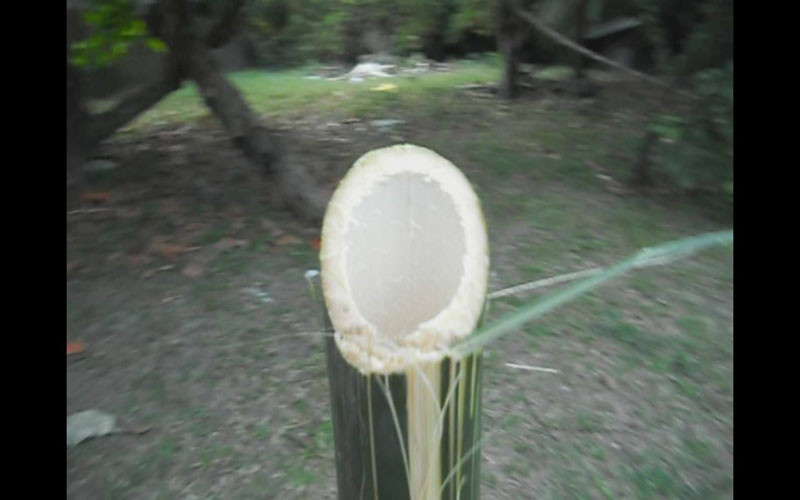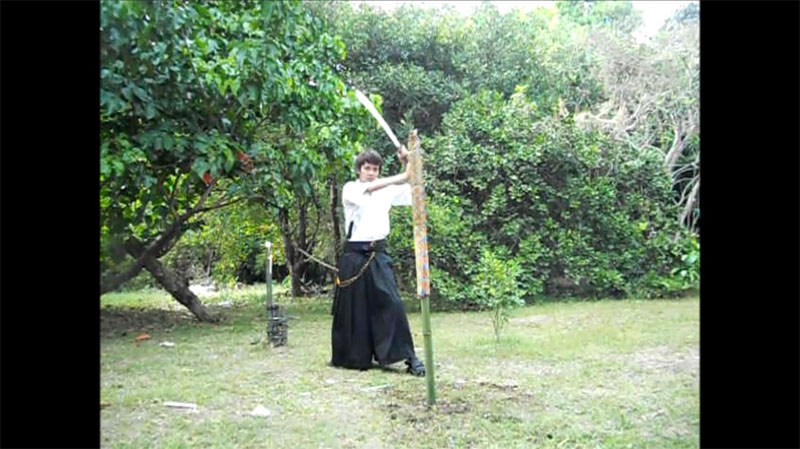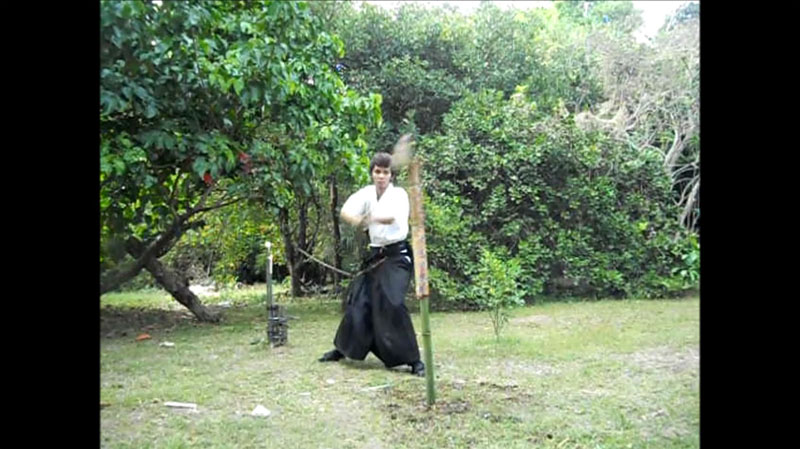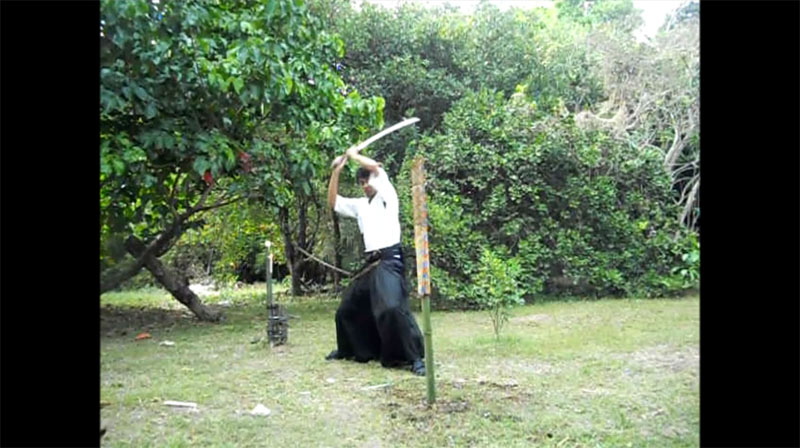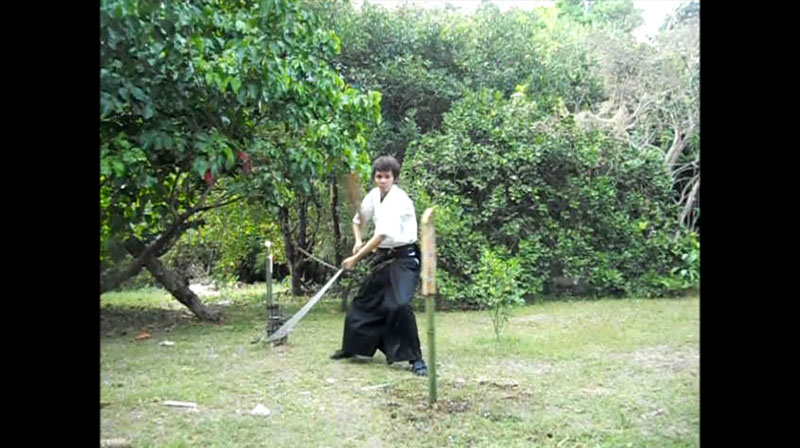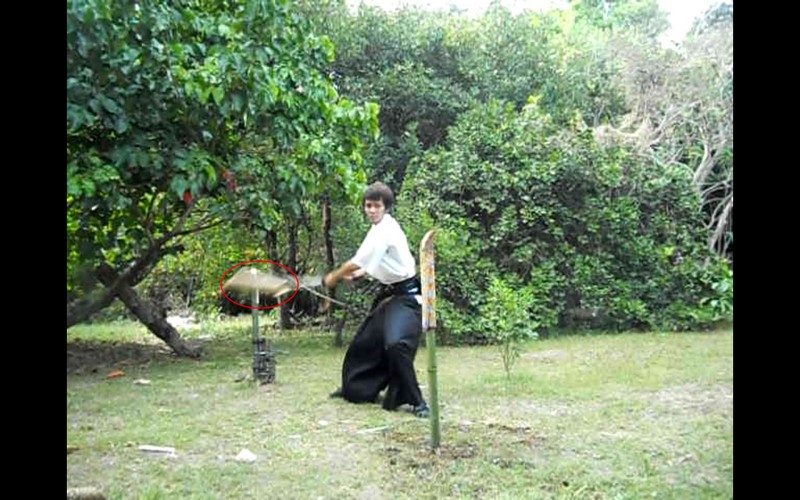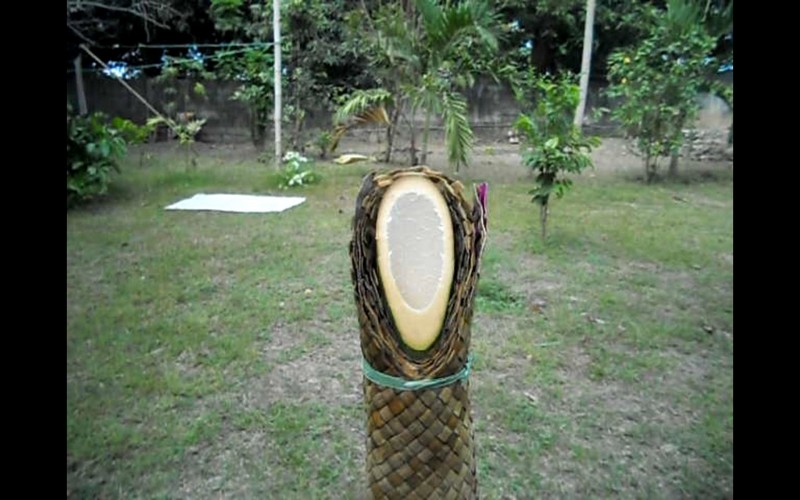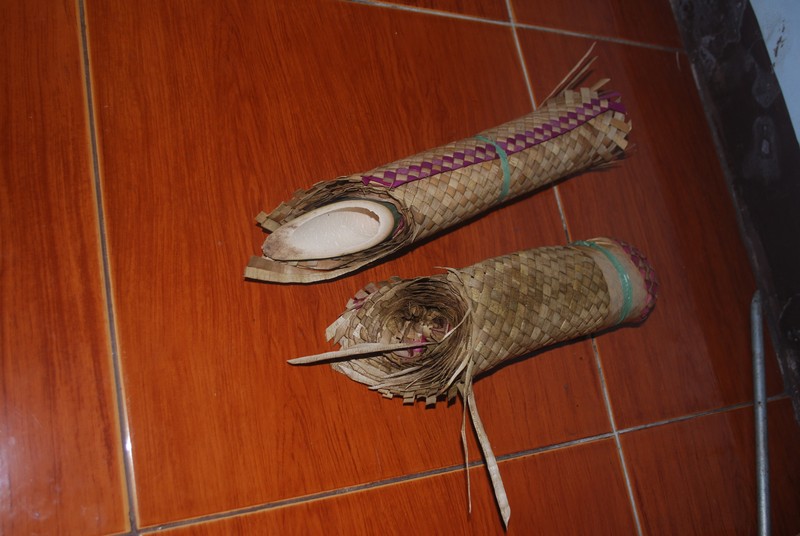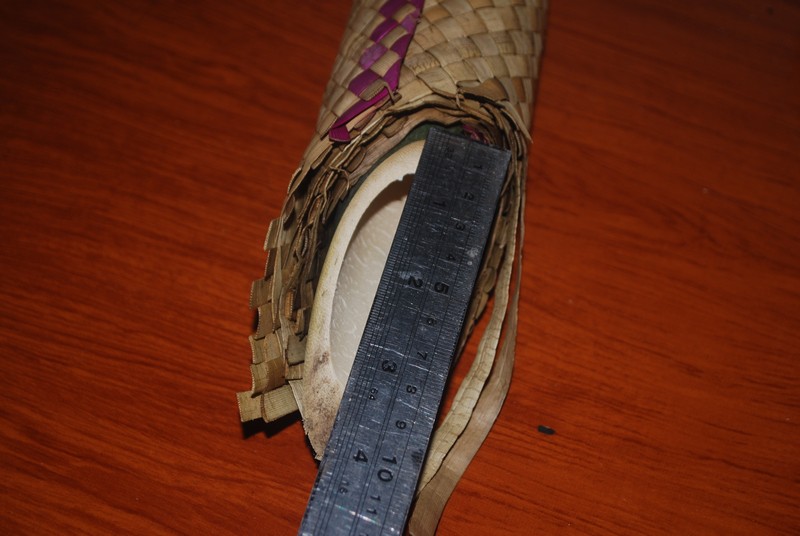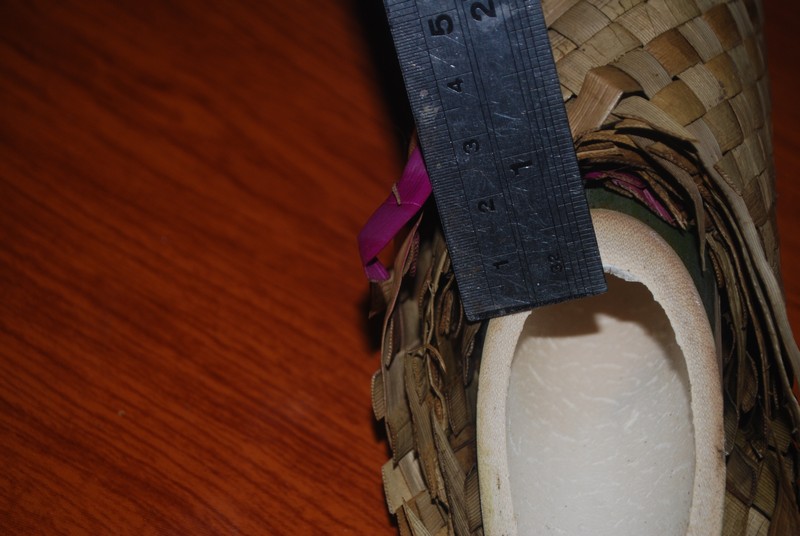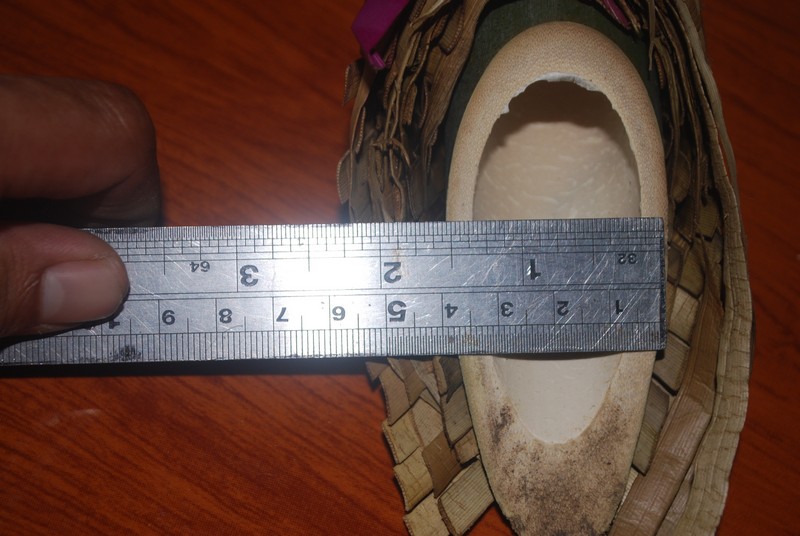Tora Katana 1060 Series Cutting Test
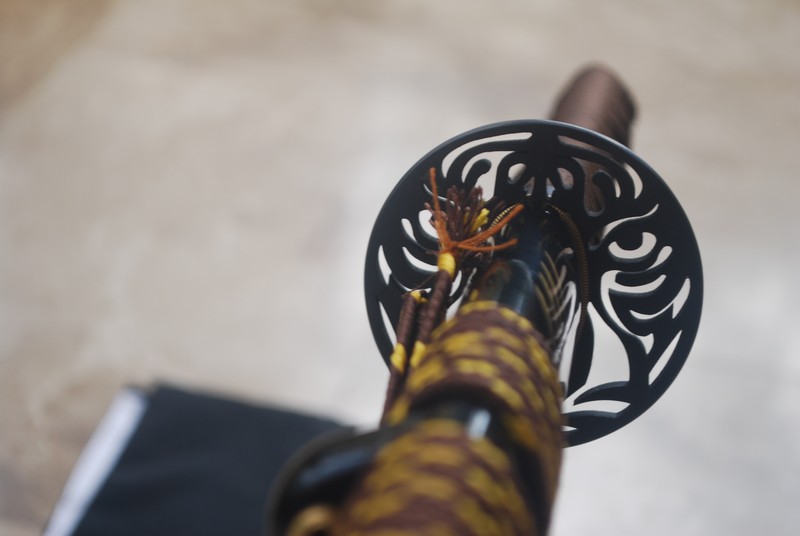
We sent Ram Maquimot of Batangas, Philippines a katana to review and perform some cutting test. We sent him our new Tora Katana 1060 Series. We chose Ram to do the tests because of his skills in tameshigiri and he also knows a lot about Japanese style swords since he’s an aspiring swordsmith. Near the end of the review, there’s a video of his full review and tameshigiri to see the sword in action.
“Tora Katana 1060 Series Review and Cutting Test”
By Ram Maquimot
Geisha’s Blade sent me a sword to review and test. This particular sword is their newest design in their 1060 Series line, the “Tora Katana, which literally means “Tiger Katana”. My initial impression of this sword is that it’s gorgeous in its own way. Before I start my review, let me just show you how beautiful this sword is.
The tsuba
“The tiger is staring at you and preparing to attack!”
Let’s start the review on its tsuba. Basically the name tora or tiger was named after its tsuba. The tsuba resembles a tiger’s face in sukashi style or open work. It is made out of blackened iron, which is very strong and durable.
According to old tales, myths, etc the tsuba is used to frighten an enemy… ^_^
The Tsuka, Fuchi, Kashira, and Menuki
The fuchi and the kashira are well fitted to the tsuka.
The tsuka is an 11-inch hardwood handle and has a “sexy shape”. It has two genuine blackened ray-skin panels, and two brass dragon menuki that is wrapped in coffee brown silk tsuka ito. The ito is tightly wrapped, though some of it are quite loose especially the ones on top of the menuki. The fuchi and kashira are also made of blackened iron, very simple yet very tough. There are 2 brass shitodome on the kashira. The shitodome are metal accents used on both the kashira and kurikata (knob on saya where the sageo is tied).
More pictures of the tsuka.
The samegawa has quite gorgeous nodules. Though you can see the loose tsuka ito in these pictures.
But this is really not a big deal, you just need to explore your creativity, do some research and I’m pretty sure that you’ll find your own way in fixing these kind of things.
The tsuka has two mekugi (bamboo pegs) that tells us this sword has a full tang.
The knots are well secured and they are pretty tight.. (I just love the texture of that samegawa). You can also see here one of the 2 brass shitodome on the kashira.
The Saya and the sageo
The saya is lacquered in black with golden stripes to resemble a tiger’s scratch marks. It’s quite fair for the price range of the sword. The saya is quite smooth and shiny.
Loving the “scratch marks” on the saya. Though in my opinion they could have used a wider brush…
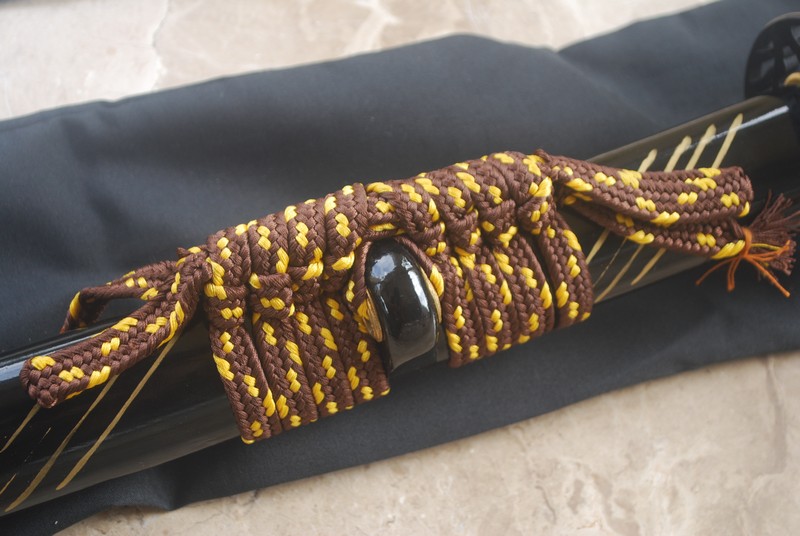
Next is the most important part of the sword.
The Blade
The blade is absolutely gorgeous! it’s quite balanced despite of its thickness. It has a regular sori (curvature) and has a nice finish. The blade is forged from 1060 high carbon steel.
The polish, however, should have an additional effort as there are still some fine scratches. But then again it’s not a big deal. The polish is between satin finish and mirror finish. According to Aldwin-san, the blade is hand polished so there are really some fine scratches on the blade and common with all their other swords.
The blade has a double bohi or grooves: a bo-hi (wide groove) and a soe-hi (single narrow groove). The termination of the wide bohi is angled which is rarely seen on modern reproduction katanas. It also has a nicely done wire brushed hamon. The blade is well oiled, and yes I can say its soaked in oil (according to Aldwin-san, it’s to protect the blade from moisture during transport) with some wood flakes all over the blade possibly from the saya.
Just gorgeous, simple beauty and elegantly deadly…
The sword is sharp out of the box, I’ve tried to make a floating paper cutting test and it was a success. Though I failed to capture a photo of it. (One man army).
Initial thoughts on the blade: I can say that its quite nice and decent, it’s a very good deal for collectors and practitioners of skill, as well as those who made cutting a hobby.
Here are photos of the disassembled sword to show the full tang of the blade, as well as the brass habaki and brass seppa, and that beautiful tiger face tsuba!
Test cutting with the Tora Katana
So after inspecting the blade I went out to have some fun in the backyard.
My targets are:
• 3 banana trunks
• 1 banig (locally made mat here in the Philippines as a substitute for tatami mat),
• 1 bamboo
• 1 bamboo wrapped with banig
As you can see, I soaked all of them in water for at least a night, to make them dense and to keep them fresh.
Banana Trunks Target
My first banana trunk target was cut in basic kesagiri. (Note I’m not a trained cutter, I’m just a backyard cutter whose goal is to share my excitement, experience and joy in cutting)
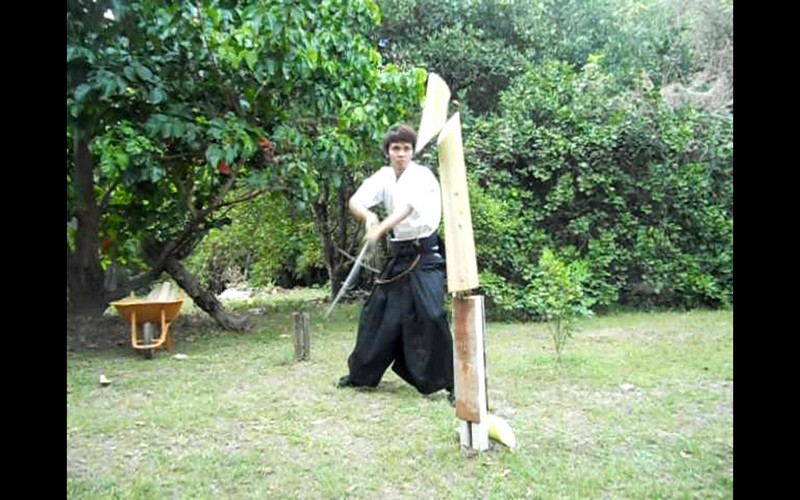
• 1st is sword’s quality
• 2nd is proper stance
• 3rd is proper angle and
• 4th is speed and accuracy .
I’ll just let the picture speak for the sword’s performance.
Due to the sword’s well balanced construction I was able to make a right left double cut.
Look at the image below for the sword’s direction.
Then I used the 3rd banana trunk target for my right/right cut.
This cut was very difficult because it needs stability, speed and blade quality. However, I managed to execute it well in my first attempt because the sword felt light and agile.
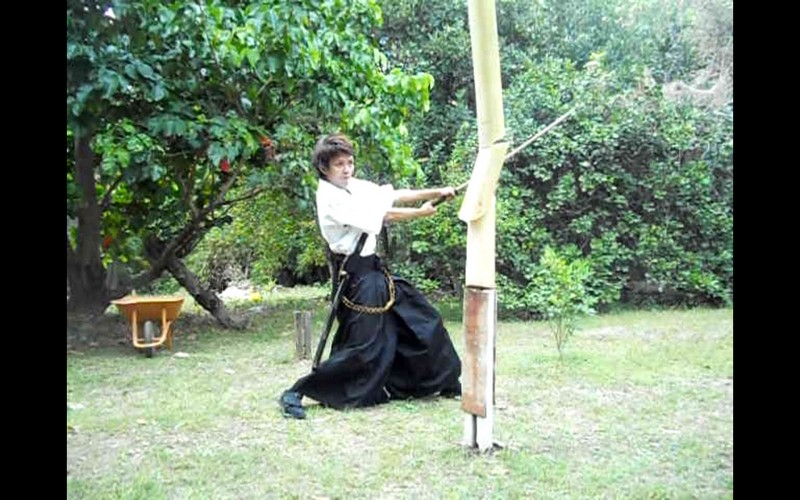
Banig target
This was my first time to cut a banig target, my expectation was “I won’t be able to cut it properly”. But guess what, the sword didn’t fail me.
Cutting the banig was like cutting butter with hot knife. It cuts smoothly through the banig.
Then I moved on to one of the 2 hard targets.
Bamboo target
Even though I failed to cut the target because the stand was not stable and the bamboo was not secured very well, the sword surprised me after banging against the hard bamboo.
Here’s a photo of the sword getting stuck in the bamboo.
The sword got stuck in this part. To my surprise, the sword remained straight without any chips or dents on the edge. This is the advantage of having a 1060 blade, because you’ll have a blade that is flexible enough to remain straight, and hard enough to retain a sharp edge for a longer period of time.
See how tough and thick that bamboo is?
Now for the main target, the bamboo wrapped with banig.
Bamboo wrapped with banig target
Before I show you the pictures, I’ll say this first, this cutting test was done to test the sword’s limits on recommended targets. For the inexperienced cutter, cutting objects other than the recommended targets can potentially damage the sword, or worst, you’ll end up cutting yourself or someone else. So please bear in mind “safety first”. Start low, end high.
Because I ended up failing on the first bamboo, I made sure that the 2nd bamboo will not wobble this time like the first one. So I dug a hole and stuck the bamboo through the ground snugly and secured.
Here’s a picture of me preparing my cut
And yes it was a success!
At last I manage to cut down a bamboo, not just a bamboo, but a bamboo wrapped with banig! 😀
Nice clean cut!
Overall view: The sword is elegant, quite fair for the price range. If you’re a cutter, and you cut a lot I recommend you to invest your funds on this sword. Not being biased but because most reproduction swords made here locally are made only for display. This sword is the best bargain value for tameshigiri and fun in the world of backyard cutting.
The sword is well made, with a nice tang geometry. High quality fittings and a very reasonable price.
Here’s a video of the full review and tameshigiri. I hope you enjoy it.
Direct link: http://youtu.be/GIonyCZonkY
*Aftermath of the banig target and the bamboo wrapped in banig.
See that clean cut?
See how thick the core of this bamboo is? This is tough stuff!
Pros:
• The sword was well made
• High quality fittings
• Very light and durable
• Deadly sharp out of the box
• Nice elegant tsuba
Cons:
• Polish should have been better
• Inconsistent tsukamaki
This is the end of my review. Thanks for reading guys!
Always remember : Life is like a sword shiny beautiful but yet fragile.
Review and tameshigiri performed by Ram Maquimot of Batangas, Philippines
